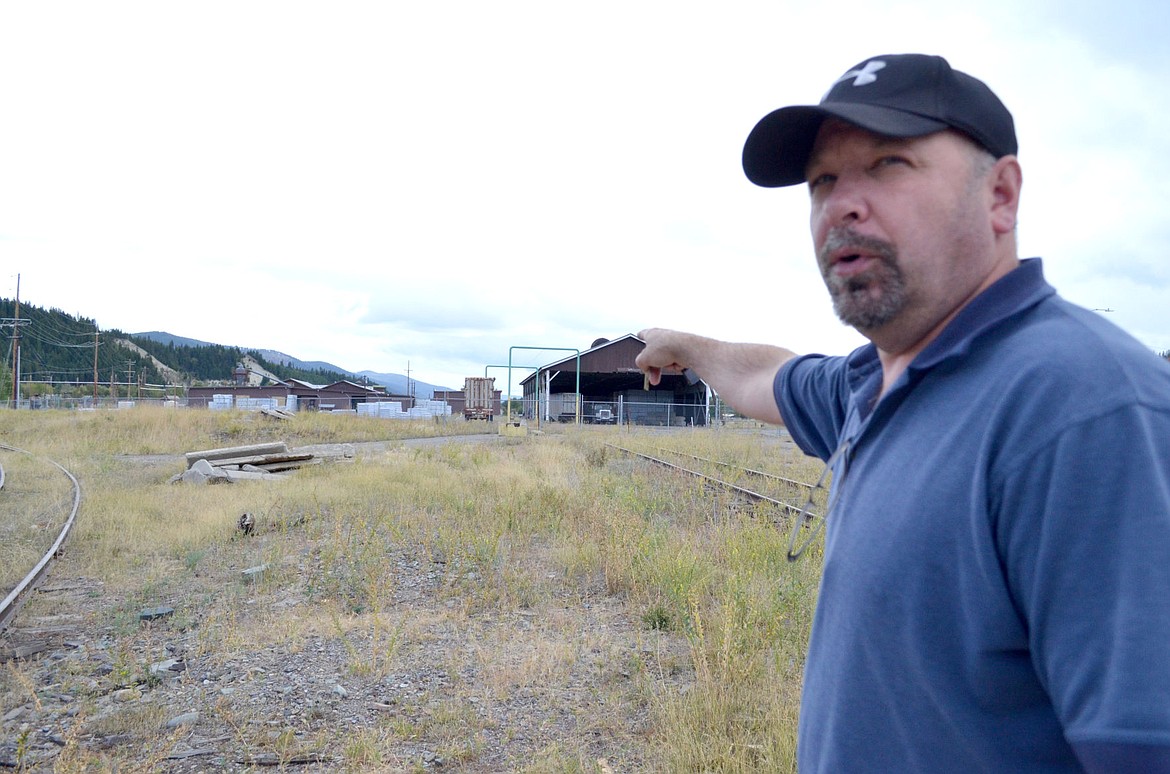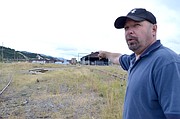Port looks to foster development in the Kootenai Business Park
The Kootenai Business Park property has faced a number of issues in its past that still linger in the park today: a massive plywood plant burned down several years ago, past owners chose not to address the infrastructure deficiencies and, of course, a Superfund site designation still hangs over the half-idle property as current management looks to invite new commerce to the park. But that doesn’t mean the Lincoln County Port Authority that manages the park isn’t doing something about it.
The Lincoln County Commissioners on Aug. 24 unanimously approved the adoption of a Targeted Economic Development District (TEDD) over the 400-acre Kootenai Business Park.
The TEDD essentially delegates any increase in funds in the tax base after Jan. 1, 2016 toward future infrastructure development and construction.
Port Authority Executive Director Tina Oliphant and Director of Operations Brett McCully say opportunity is big in the business park: a 400-acre parcel about 80 percent of the size of Libby city limits. The TEDD, they said, is helpful in creating an environment that will draw business into the park.
“It’s an incredible avenue here in Montana when we have nothing else,” Oliphant said. “If we’re putting businesses here, communities are growing, we’re creating jobs and that’s the benefit. It doesn’t take much improvement to start generating a little cash every year and after five years you get a chunk and you can use that as seed money to get public funding.”
And although the TEDD is in place, McCully said that zoning designation won’t pad the port’s infrastructure for a few years.
“We’re probably five years out before we see any increments in the TEDD,” he said.
Oliphant said putting a new tenant in the former Stinger Welding building would be a huge boost to revenues incoming through the TEDD. While a few businesses have reached out in interest, none have made serious commitments yet.
But that hasn’t stopped the port management from moving forward with new infrastructure projects. First on the long list of those projects is replacing the rail spur that connects the park to the Burlington Northern Sante Fe rail line. Access to the BNSF line is essentially equivalent to having access to Interstate 90 for companies that ship their product in smaller quantities by truck.
KLJ Engineering, the same survey-engineering firm that worked on the new Glacier Rail Park project in Kalispell and overhauled the rail site in Shelby, currently underway on an environmental survey of the site. The final engineering portion of the replacement is expected to begin next month. The entire 4,200-foot rail replacement is expected to cost between $2 and $2.5 million.
Unprecedented changes have already been made at the county level to allow the TEDD in place. State law says in order to install the TEDD, county commissioners had to approve a zoning district over the Port Authority property. McCully said the zoning decision is the very first zoning designation made in Lincoln County, ever, but instead of implementing restrictions, the designation allows for every type of business and industrial use.
“We’re zoned for everything,” he said.
The Port Authority already has nine tenants, including a fingerjoint plant, a post and pole producer, a mining supply company and a handful of others. The property currently contains 120 acres of immediately-ready development space, as well as another 100 acres of space that should be ready after some flood plain management, which McCully said would not a be heavy financial burden.
And while the property is currently listed as the Environmental Protection Agency’s Superfund Site known as Operable Unit 5, the Port Authority is currently working to delist the 400 acres and shrug the toxic stigma associated with Libby’s asbestos-related past. McCully said that delisting is currently in negotiations between the EPA and the Montana Department of Environmental Quality, the state office which would incur oversight of the property after the EPA delists it.
While the property has readily available sites to build, the issue is the infrastructure that supports the business park. While an area has to be declared “infrastructure deficient” before a TEDD can be installed, Oliphant said the business park has been lacking in infrastructure upkeep since before 2003, when Stimson Lumber handed to the property over to the Port Authority.
In the years before gifting the property to the county, which in turn created the Port Authority as a quasi-county entity to administer the business park, little infrastructure upkeep was done to allow future commerce to develop in the park, let alone ship their products in and out of the property.
After the rail spur is replaced, Oliphant said the port will need to address the unpaved and meandering roadways, invest some maintenance into buildings already in the park and potentially upgrade their sewer lagoons.
“There’s a lot of stuff,” Oliphant said.
Aside from the industrial side, the Port is also looking to invest in a recreational portion of the park. One project is to develop a new road to the fishing pond, which sits next to another plot of land ripe for new recreational opportunities.
Right now, the first step requires a new connection to the BNSF rail line. If they build it, then hopefully, investment will come.
“They need to feel confident and have a lot of answers and it has to be easy to work with them. That’s all we can do,” Oliphant said. “We’re shaping this clay, but we’re waiting for someone to say this is what we want the clay to look like.”
Reporter Seaborn Larson may be reached at 293-4124 or by email at slarson@dailyinterlake.com.




